Approach
Presentation after plant poisoning depends entirely on the specific plant consumed. In general, large quantities of the plant need to be consumed (or the plant needs to be concentrated into an extract or brewed into a tea) in order to affect symptoms. Clinicians should make every effort to identify the involved plant, but treatment should focus on presenting symptoms rather than expected or anticipated consequences of plant consumption.[1] Asymptomatic patients who present for evaluation after consuming a potentially poisonous plant should be observed for several hours after ingestion, and efforts should be made to correctly identify the plant. Some highly toxic plants may require more intensive evaluation and observation (e.g., poison or water hemlock, lily of the valley, autumn crocus, glory lily, mayapple, jequirity bean, yew leaves).
Historical factors
During the history, it is helpful to determine the amount of plant ingested and the method of ingestion, as well as the type of plant ingested. For example, only small amounts of peyote are required to produce neurotoxic symptoms, whereas large quantities of nutmeg are necessary to have the same effects. In general, when children are found ingesting plants, the doses are usually small, and the plants are often known/identifiable.[1] When adults forage for/collect and ingest wild plants, the doses are usually large and the plants are often misidentified. When plant concentrates are created for ingestion by brewing or extracting, doses are very large, and this is the most likely method of ingestion to result in toxicity.[1]
Symptom description is very important.
Patients who have ingested pokeweed, inkberry, holly berries (usually ≥6 berries), mistletoe berries, oxalis, or ipecac may complain of gastrointestinal cramping, vomiting, and/or diarrhea.[Figure caption and citation for the preceding image starts]: HollyFrom private collection of Gerald O'Malley [Citation ends].
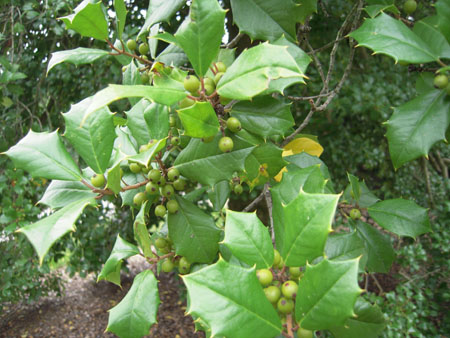 [Figure caption and citation for the preceding image starts]: OxalisFrom private collection of Gerald O'Malley [Citation ends].
[Figure caption and citation for the preceding image starts]: OxalisFrom private collection of Gerald O'Malley [Citation ends].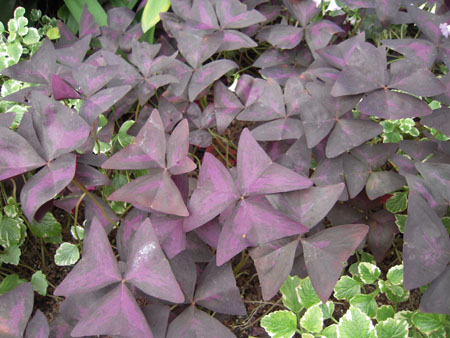
Patients who have ingested blue-green algae, ragworts, other Senecio species, rattleweeds, Heliotropium species, distaff thistle, kava kava, or green tea capsule may complain of symptoms of acute liver failure (e.g., skin yellowing, confusion, poor memory, personality change, lethargy).[Figure caption and citation for the preceding image starts]: SenecioFrom private collection of Gerald O'Malley [Citation ends].

Patients who have ingested monkshood, lily of the valley, foxglove, oleander, red squill, blue cohosh, poison hemlock, golden chain, Indian tobacco, lupin, tobacco, green tea, yerba mate, bala, ma huang, or khat may complain of cardiovascular symptoms (e.g., fainting, dizziness, shortness of breath, fatigue, palpitations).[Figure caption and citation for the preceding image starts]: OleanderFrom private collection of Gerald O'Malley [Citation ends].
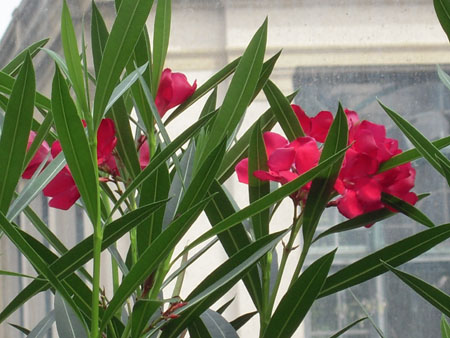
Patients who have ingested, snorted, or inhaled morning glory seeds, Jimson weed seeds, poppy seeds, absinthe, marijuana, coca, peyote (only small amount required), Hawaiian baby woodrose, Calea, Salvia divinorum, Kratom, or very large amounts of nutmeg may complain of hallucinations and/or confusion.
Patients who have ingested monkshood, wolfsbane, devil helmet, poison nut, quaker button, strychnos seed, Chondrodendron tomentosum, Strychnos toxifera, wireweed, azalea, fetterbush, Kalmia species, buckthorn, coyotilla, or tullidora may complain of limb weakness, numbness, or pain.
Patients who have ingested water hemlock, other Cicuta species, wormwood, absinthe, tansy, sage, poison nut, quaker button, strychnos seed, Carolina jessamine (Gelsemium sempervirens), or Japanese star anise may present after having seizures. The seizures are characterized as generalized muscular spasm and myoclonus with mental status changes.[Figure caption and citation for the preceding image starts]: CicutaFrom private collection of Gerald O'Malley [Citation ends].
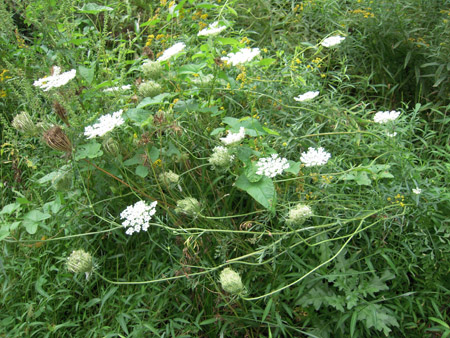 [Figure caption and citation for the preceding image starts]: CicutaFrom private collection of Gerald O'Malley [Citation ends].
[Figure caption and citation for the preceding image starts]: CicutaFrom private collection of Gerald O'Malley [Citation ends]. [Figure caption and citation for the preceding image starts]: CicutaFrom private collection of Gerald O'Malley [Citation ends].
[Figure caption and citation for the preceding image starts]: CicutaFrom private collection of Gerald O'Malley [Citation ends]. [Figure caption and citation for the preceding image starts]: WormwoodFrom private collection of Gerald O'Malley [Citation ends].
[Figure caption and citation for the preceding image starts]: WormwoodFrom private collection of Gerald O'Malley [Citation ends].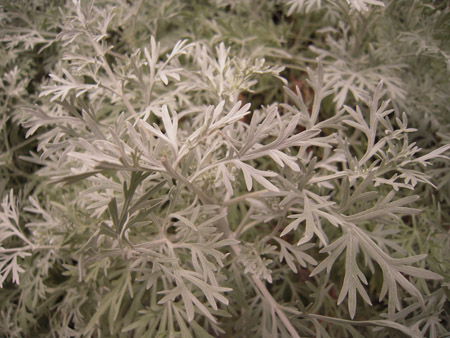 [Figure caption and citation for the preceding image starts]: Blue sageFrom private collection of Gerald O'Malley [Citation ends].
[Figure caption and citation for the preceding image starts]: Blue sageFrom private collection of Gerald O'Malley [Citation ends].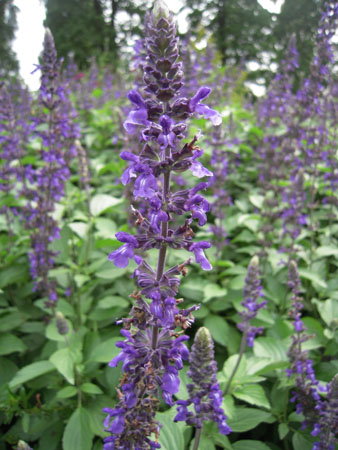 [Figure caption and citation for the preceding image starts]: Blue sageFrom private collection of Gerald O'Malley [Citation ends].
[Figure caption and citation for the preceding image starts]: Blue sageFrom private collection of Gerald O'Malley [Citation ends].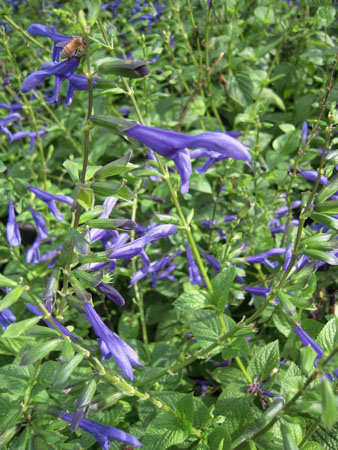 [Figure caption and citation for the preceding image starts]: Star aniseFrom private collection of Gerald O'Malley [Citation ends].
[Figure caption and citation for the preceding image starts]: Star aniseFrom private collection of Gerald O'Malley [Citation ends].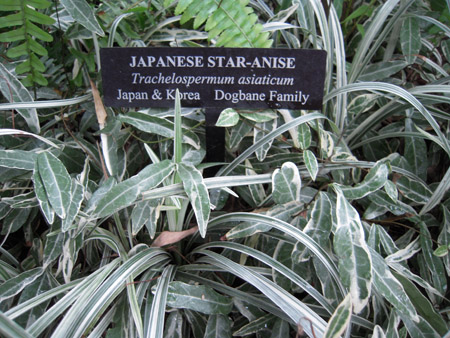 [Figure caption and citation for the preceding image starts]: Star aniseFrom private collection of Gerald O'Malley [Citation ends].
[Figure caption and citation for the preceding image starts]: Star aniseFrom private collection of Gerald O'Malley [Citation ends].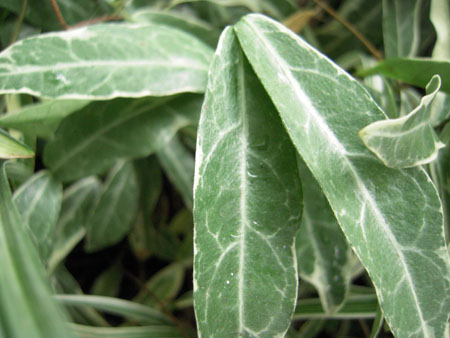 [Figure caption and citation for the preceding image starts]: Star aniseFrom private collection of Gerald O'Malley [Citation ends].
[Figure caption and citation for the preceding image starts]: Star aniseFrom private collection of Gerald O'Malley [Citation ends].
Patients who have ingested philodendron, caladium, oxalis, peace lily, chili, or cayenne pepper plants may complain of dermatologic irritation or mucous membrane pain/burning.[Figure caption and citation for the preceding image starts]: OxalisFrom private collection of Gerald O'Malley [Citation ends].
 [Figure caption and citation for the preceding image starts]: CapsicumFrom private collection of Gerald O'Malley [Citation ends].
[Figure caption and citation for the preceding image starts]: CapsicumFrom private collection of Gerald O'Malley [Citation ends].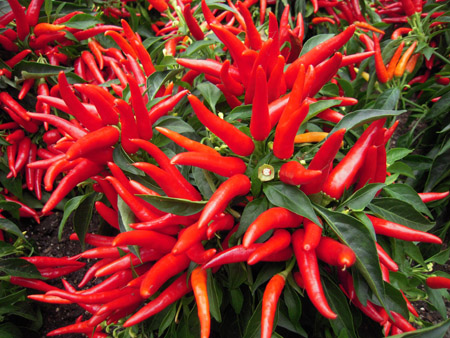 [Figure caption and citation for the preceding image starts]: CapsicumFrom private collection of Gerald O'Malley [Citation ends].
[Figure caption and citation for the preceding image starts]: CapsicumFrom private collection of Gerald O'Malley [Citation ends].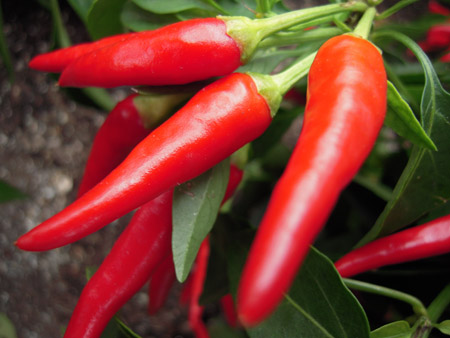 [Figure caption and citation for the preceding image starts]: CapsicumFrom private collection of Gerald O'Malley [Citation ends].
[Figure caption and citation for the preceding image starts]: CapsicumFrom private collection of Gerald O'Malley [Citation ends].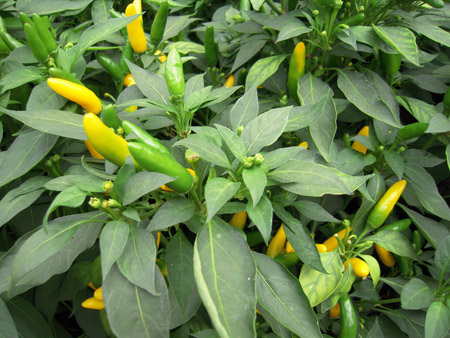
Patients who have ingested sweet vernal grass, tonka beans, bedstraw, sweet clover, red clover, or horse chestnut may complain of symptoms of severe bleeding. Bleeding may be visible (e.g., epistaxis, melena, vaginal hemorrhage, hematuria, hematemesis, hemoptysis, petechial spotting) or nonvisible, manifesting according to the origin of the bleeding (e.g., headache, altered mental status, syncope, shortness of breath, chest pain, abdominal pain, or muscle pain and swelling).
Patients who have ingested autumn crocus, meadow saffron, Madagascar periwinkle, North American mayapple, Podophyllum species, castor bean (Ricinus communis), or ackee fruit may complain of symptoms associated with bone marrow suppression, which will manifest clinically as weakness, shortness of breath, pale skin, easy bruising, petechiae, abdominal pain, fever, rash, and diarrhea.[Figure caption and citation for the preceding image starts]: Castor beanFrom private collection of Gerald O'Malley [Citation ends].

Patients who have ingested, snorted, or inhaled jimsonweed, locoweed, belladonna, henbane, or European/true mandrake may complain of antimuscarinic symptoms (e.g., fever, dry skin, skin flushing, hallucinations, inability to pass urine, and vomiting).[18]
Patients who have ingested betel nut, calabar bean, ordeal bean, and pilocarpus plants may complain of muscarinic symptoms (e.g., sweating, fainting, dizziness, shortness of breath, fatigue, palpitations, and diarrhea).[26]
Patients who have ingested blue cohosh, poison hemlock, golden chain, Indian tobacco, lupin, or tobacco may complain of symptoms of violent vomiting, sweating, tremors, fever, palpitations, seizures, and shortness of breath.[10]
Patients who have ingested cassava or prunus plants may complain of nausea, vomiting, abdominal pain, shortness of breath, hyperventilation, and, depending on the severity, headache and altered mental status.[27]
Physical exam
Signs on physical exam are also important.
Patients who have ingested blue-green algae, ragworts, other Senecio species, rattleweeds, Heliotropium species, distaff thistle, kava kava, or green tea capsules may have signs of liver failure (e.g., jaundice, impaired consciousness, asterixis, ascites, palmar erythema, spider angiomata).[Figure caption and citation for the preceding image starts]: SenecioFrom private collection of Gerald O'Malley [Citation ends].

Patients who have ingested monkshood, lily of the valley, foxglove, oleander, or red squill may have weak pulses, be bradycardic, and/or be hypotensive.[Figure caption and citation for the preceding image starts]: OleanderFrom private collection of Gerald O'Malley [Citation ends].

Patients who have ingested blue cohosh, poison hemlock, golden chain, Indian tobacco, lupin, tobacco, green tea, yerba mate, bala, ma huang, bitter orange, or khat may be tachycardic and hypertensive.
Patients who have ingested monkshood, wolfsbane, devil helmet, poison nut, quaker button, strychnos seed, Chondrodendron tomentosum, Strychnos toxifera, wireweed, azalea, fetterbush, Kalmia species, buckthorn, coyotilla, or tullidora may have weakness, and reduced sensation on neurologic exam.
Patients who have ingested jimsonweed, locoweed, belladonna, henbane, or European/true mandrake may demonstrate antimuscarinic signs including mydriasis (dilated pupils), fever, dry skin, skin flushing, tachycardia, and urinary retention.[18]
Patients who have ingested betel nut, calabar bean, ordeal bean, or pilocarpus plants may demonstrate cholinomimetic signs including miosis (constricted pupils), diaphoresis, bradycardia, hypotension, and basal crackles on lung auscultation.[26]
Patients who have ingested blue cohosh, poison hemlock, golden chain, Indian tobacco, lupin, laburnum, or tobacco may demonstrate signs of diaphoresis, mydriasis, fasciculation, fever, tachycardia, hypertension, and respiratory depression.[10][30]
Investigations
ECG should be performed as part of the routine exam of patients who have ingested any poisonous plants.
ECGs of patients who have ingested monkshood, lily of the valley, foxglove, oleander, red squill, blue cohosh, poison hemlock, golden chain, Indian tobacco, lupin, green tea, yerba mate, bala, or ma huang may show dysrhythmias.[Figure caption and citation for the preceding image starts]: OleanderFrom private collection of Gerald O'Malley [Citation ends].

ECGs of patients who have ingested monkshood, lily of the valley, foxglove, oleander or red squill may show bradyarrhythmias with/without heart block.
ECGs of patients who have ingested blue cohosh, poison hemlock, golden chain, Indian tobacco, lupin, tobacco, green tea, yerba mate, bala, ma huang, or khat may show tachyarrhythmias.
ECGs of patients who have ingested yew leaves or seeds may show ventricular arrhythmias.[Figure caption and citation for the preceding image starts]: YewFrom private collection of Gerald O'Malley [Citation ends].
 [Figure caption and citation for the preceding image starts]: YewFrom private collection of Gerald O'Malley [Citation ends].
[Figure caption and citation for the preceding image starts]: YewFrom private collection of Gerald O'Malley [Citation ends].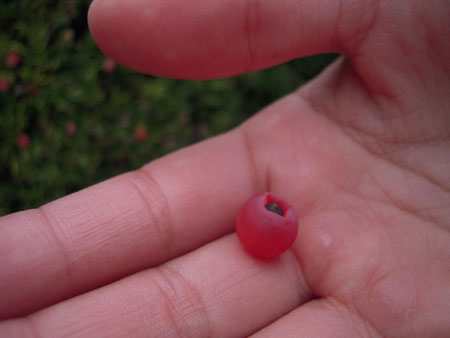
Laboratory tests
CBC can help evaluate plant-induced bone marrow suppression or provide evidence of internal bleeding; serum electrolytes, BUN, and creatinine may be useful for the evaluation of plant-induced gastroenteritis/nephrotoxins.
Arterial blood gas and serum lactate may be necessary after ingestion of cyanogenic glycoside-containing plants or after plant-induced seizure in order to assess for acidosis.
Serum digoxin levels may be positive after ingestion of cardiac glycoside-containing plants, but due to differences in binding affinity to the assay, levels are not useful and treatment is determined according to symptom severity. Negative results may occur despite ingestion of cardiac glycoside.
Liver function tests are useful after ingestion of potentially hepatotoxic plants, and INR is useful after ingestion of plants with the potential to cause bleeding/hepatotoxicity.
Serum calcium levels may be decreased after ingestion of soluble oxalate-containing plants (rhubarb, sorrel, dock, star fruit).
Serum glucose may be decreased after ingestion of unripe ackee fruit.
Troponins may be prognostic for cardiotoxicity in colchicine ingestions.
Patients with respiratory or cardiovascular symptoms (e.g., shortness of breath, cough, chest pain) require chest x-ray.
Patients who have ingested betel nut, calabar bean (ordeal bean), or pilocarpus plants may have noncardiogenic pulmonary edema. Depending on the severity, this may be visible on chest x-ray.
Response to physostigmine in patients with possible antimuscarinic plant ingestion
Physostigmine is an acetylcholinesterase inhibitor that lasts for a short period (0.5 to 6 hours) and may reverse the antimuscarinic effects of certain medications and toxins for a short period of time.
Physostigmine may be useful in antimuscarinic plant poisoning as a diagnostic aid, when the etiology of the patient's fever, tachycardia, and altered mental status are unknown. Response to physostigmine can help differentiate between an antimuscarinic poisoning and another etiology such as infection or poisoning via a sympathomimetic. Physostigmine may be used as treatment and may control agitation more effectively than benzodiazepines.[34]
Plant identification
Patients may know which plants they have ingested, or may even present the plants (or photographs of the plants) to the physician. In these cases, local poison control centers, universities, colleges, and arboretums/nurseries/greenhouses can be helpful in plant identification.[1][35] The US Food and Drug Administration (FDA) also maintains an online searchable database that may be helpful. US FDA: PLANTOX poisonous plant identification database Opens in new window However, very often patients are incorrect in their plant identification. Clinicians should take note of and attempt to identify the plant species, but attention should focus on presenting signs and symptoms.
Use of this content is subject to our disclaimer